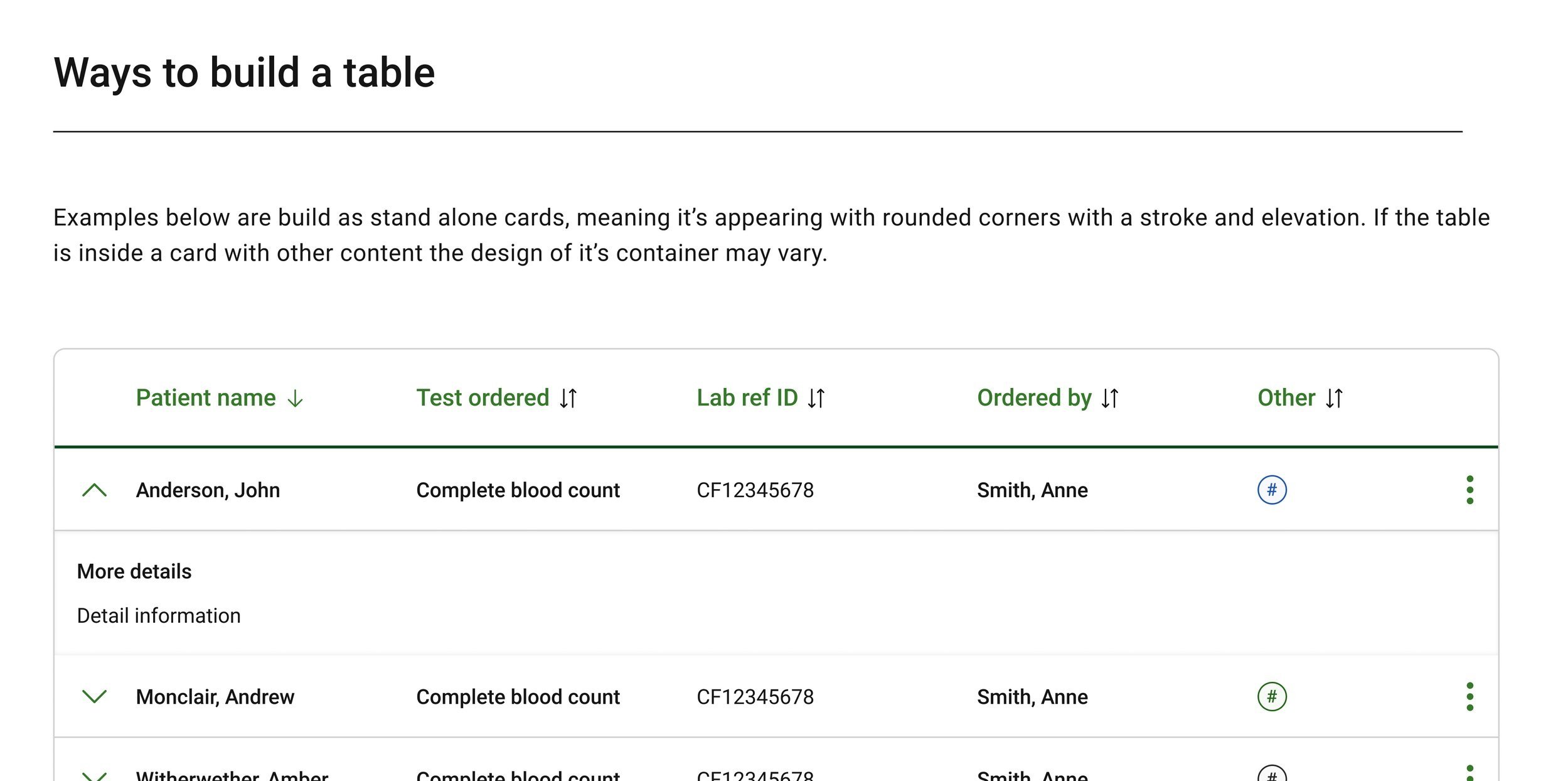Enterprise Healthcare Design Transformation
Created an accessibility-first design system that scaled Quest Diagnostics from 1 to 20 products and reduced production time by 40% through strategic component architecture and WCAG compliance integration.

Measurable impact
Strategic design decisions that drove enterprise-wide transformation
Quest Diagnostics, a leader in diagnostic services, faced a need for an enterprise design system to unify user experiences and prioritize accessibility. With multiple teams working on patient-facing platforms, internal tools, and B2B applications, the company struggled with inconsistent user experiences and duplicated design efforts.
However, Quest was missing opportunities to maximize the impact of its digital presence. How can we create a scalable design foundation that accelerates product development while maintaining the high standards that healthcare users expect?
Healthcare teams lacked consistent, accessible design standards.
Create unified, accessible experiences across products while reducing development time and effort.
“I’d like components that already meet WCAG standards, so we can focus on other things instead of compliance”
Teams wanted accessibility-first components
412 average defects before design system implementation
This insight revealed a critical opportunity. Teams were spending significant time researching and implementing accessibility standards for each component they built, creating bottlenecks and inconsistent compliance across products. Designers and developers wanted to focus on innovation and user experience rather than repeatedly solving the same accessibility challenges.
The healthcare context made this need even more urgent. Quest's products serve diverse user populations, including patients with varying abilities and healthcare providers working in high-stress environments. Accessibility wasn't just a compliance requirement—it was essential for delivering equitable healthcare experiences.
Built-in Accessibility Component Library
Developed an accessibility-first component library that includes built-in WCAG 2.1 AA compliance, screen reader optimization, and keyboard navigation, complete with clear implementation guidelines.
74% reduction in average defects after design system implementation
Flexible Integration Technology Challenge
“I need something that works with our existing tech but doesn’t lock us into rigid patterns.”
Quest's development teams were working across multiple technology stacks and legacy systems, each with unique constraints and requirements. Healthcare professional technology presented particularly complex challenges—developers needed components that could handle clinical workflows, integrate with other systems, and accommodate specialized data requirements while maintaining consistency and reliability.
The existing design system forced teams to adhere to specific frameworks and implementation patterns that didn't align with their technical architecture. The healthcare context made this even more complex, as systems needed to integrate with existing platforms, comply with stringent security requirements, and support specialized use cases, such as displaying lab results and visualizing patient data. Developers needed components that could meet their immediate needs while remaining flexible enough for these specific healthcare scenarios.
Framework-Agnostic Flexible Component Architecture
Designed a system architecture with HTML/CSS/JavaScript components that integrate seamlessly with Angular and React while maintaining flexibility.
Four Core System Features
Enhanced Component Library: Comprehensive set of UI components with built-in accessibility
Design Spec System: Scalable foundation for colors, typography, and spacing across all products
Interactive Documentation: Living style guide with code examples and implementation guidance
Accessibility Framework: Integrated testing and compliance tools for universal design
Impact & Success Metrics
The solution successfully integrated design consistency across multiple Quest touchpoints while maintaining the flexibility and innovation that teams expect. The system provides precise mechanisms for teams to access reusable components throughout their natural development workflows.
Quantitative Results
Qualitative Impact
What I Learned
This project reinforced the importance of accessibility-first design in healthcare technology. By prioritizing universal design principles from the outset, we were able to create a system that not only met compliance requirements but also significantly enhanced the user experience for everyone. The key was understanding that healthcare users don't just need functional interfaces—they need trustworthy, consistent experiences that support critical health decisions.
The success stemmed from treating the design system as a product in its own right, with clear value propositions for each team. Rather than forcing adoption, we created tools that made teams' jobs easier and more effective.



















